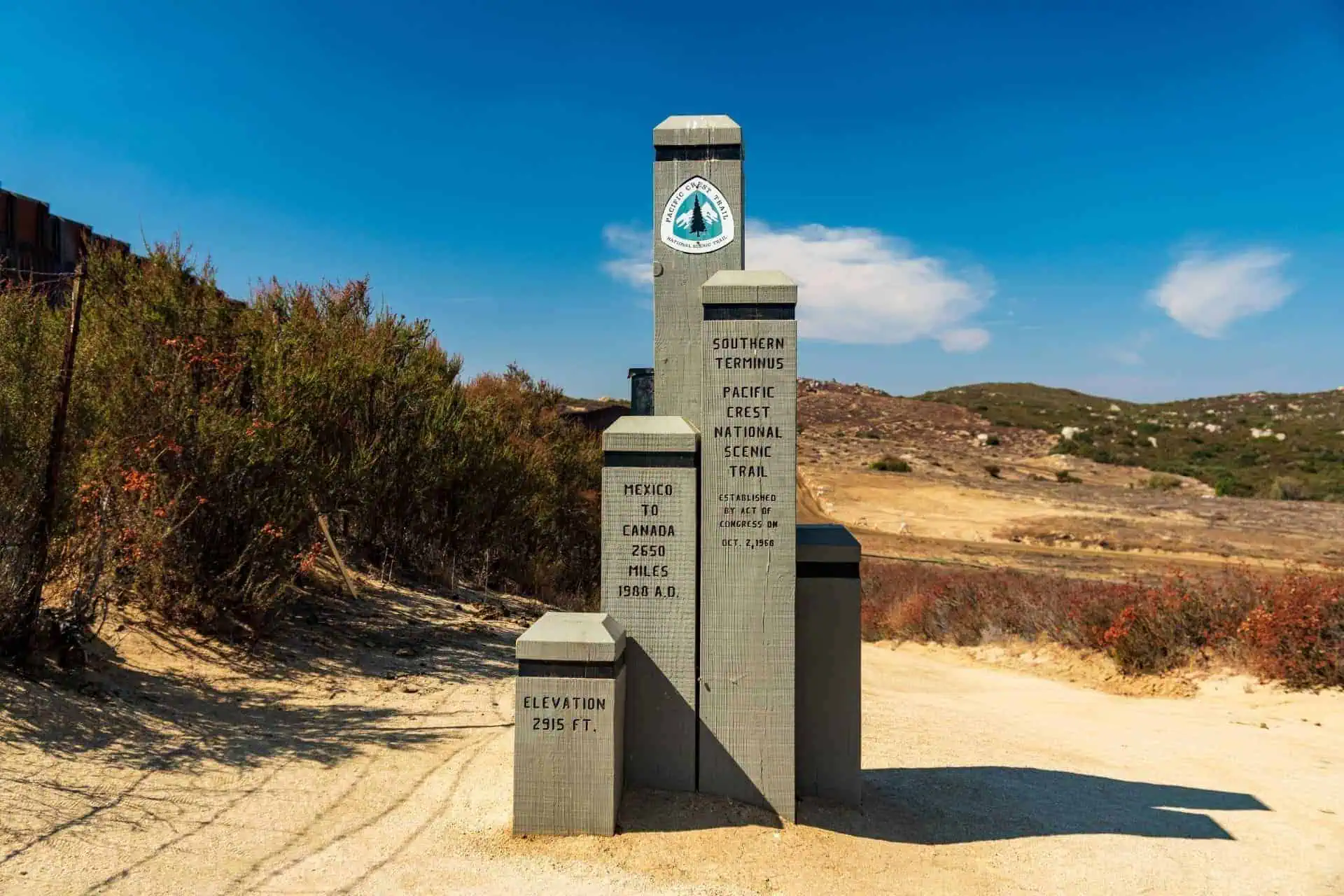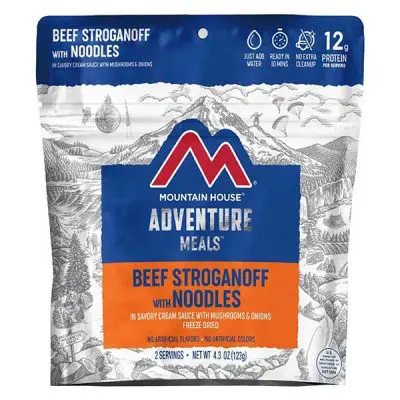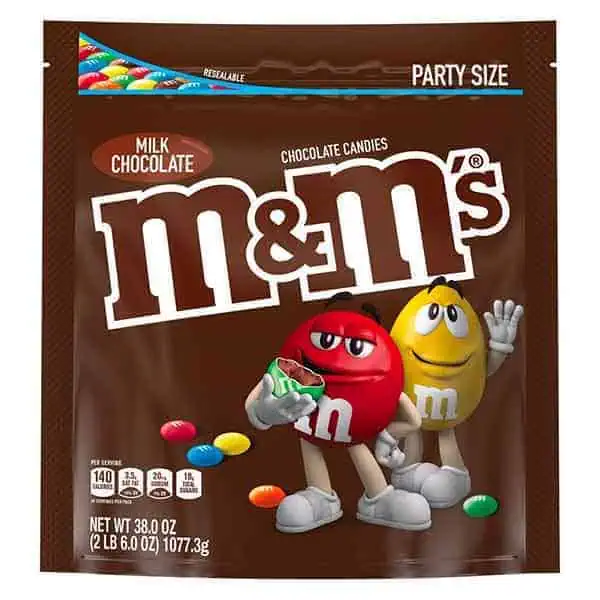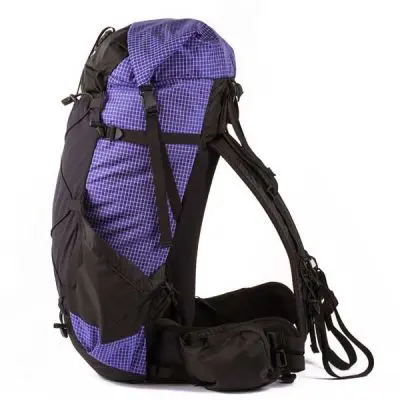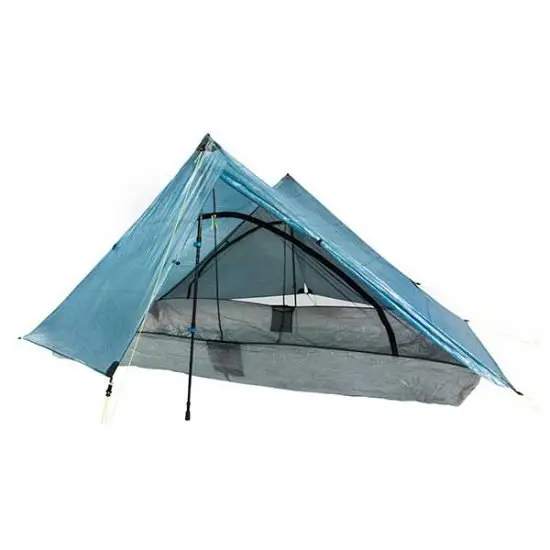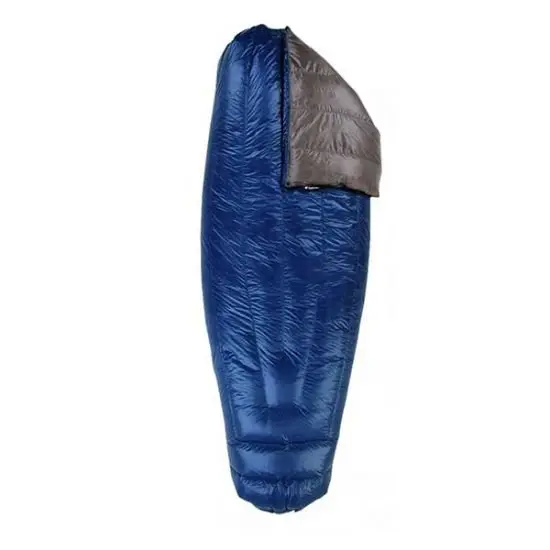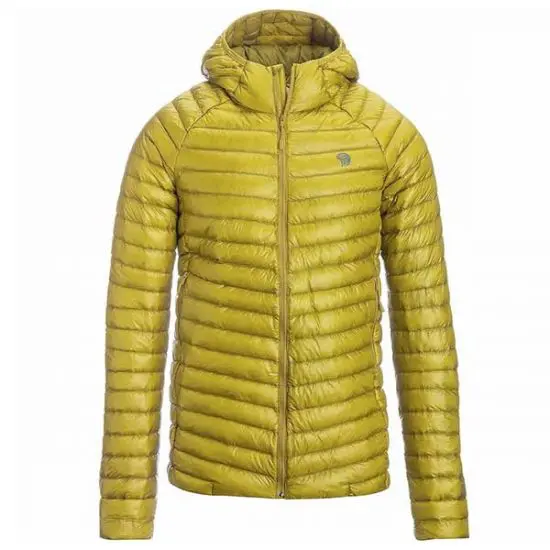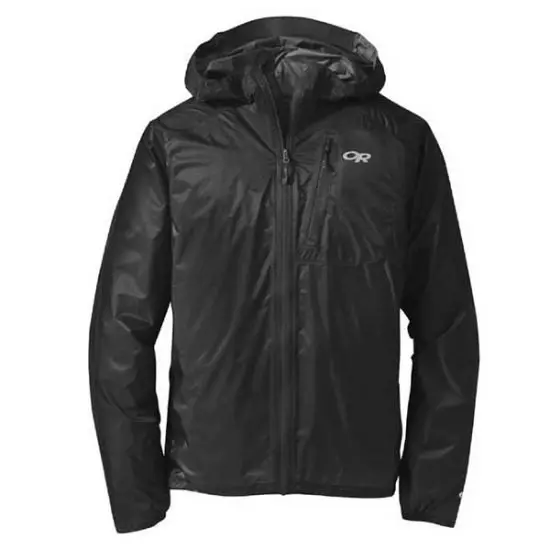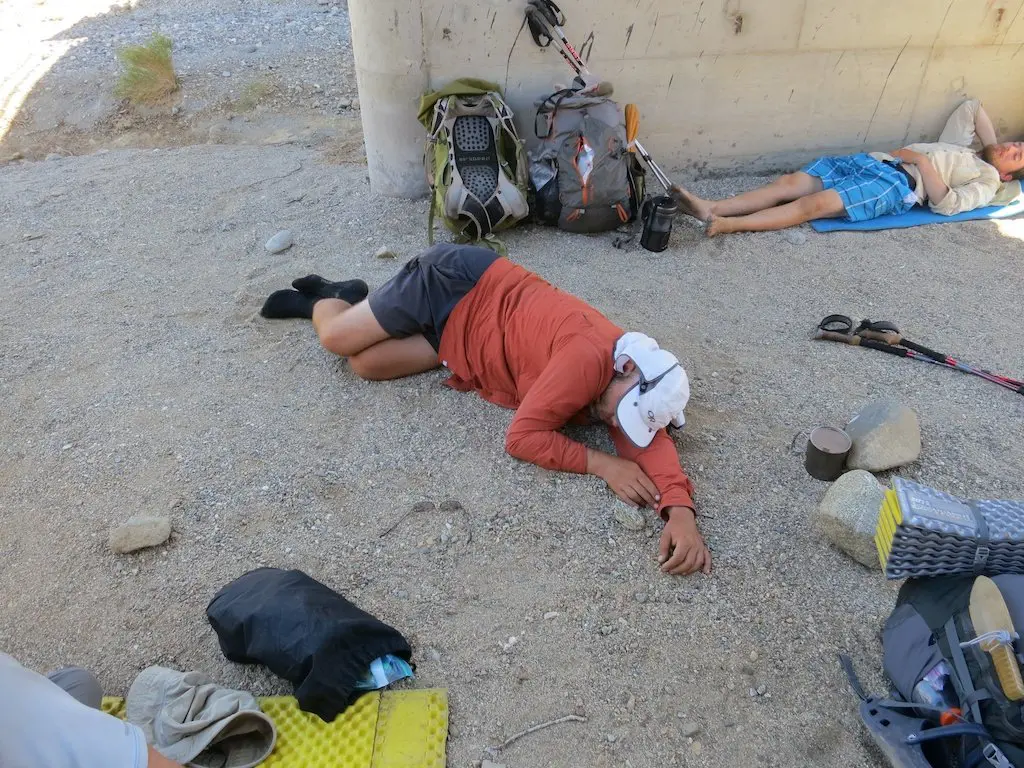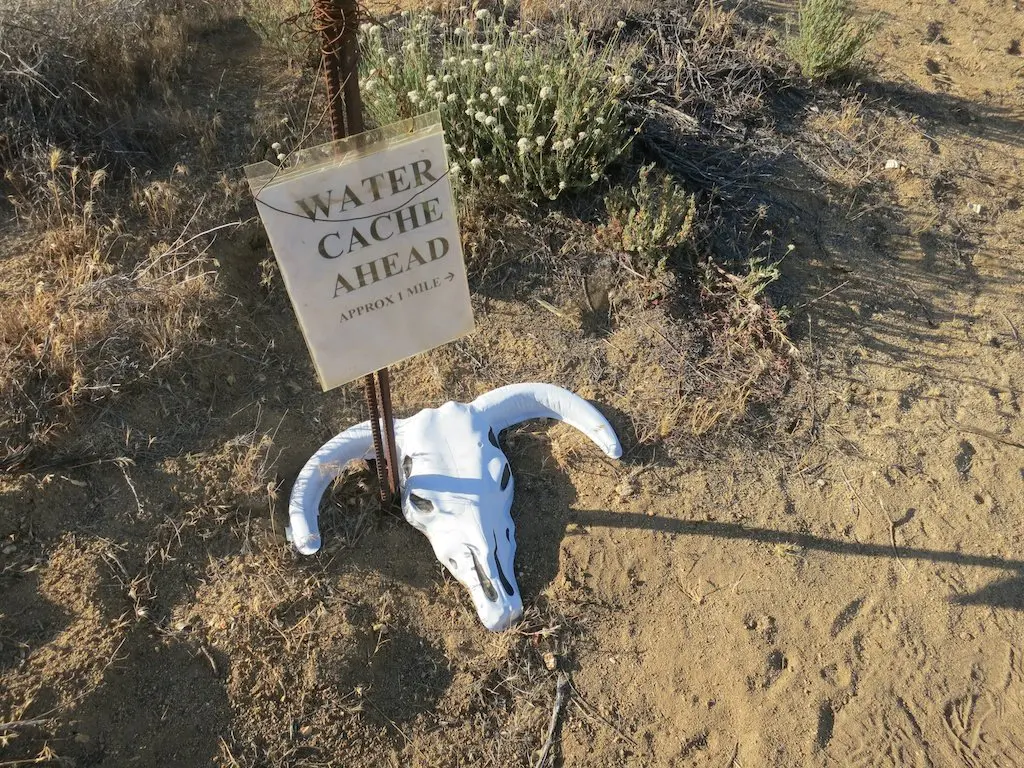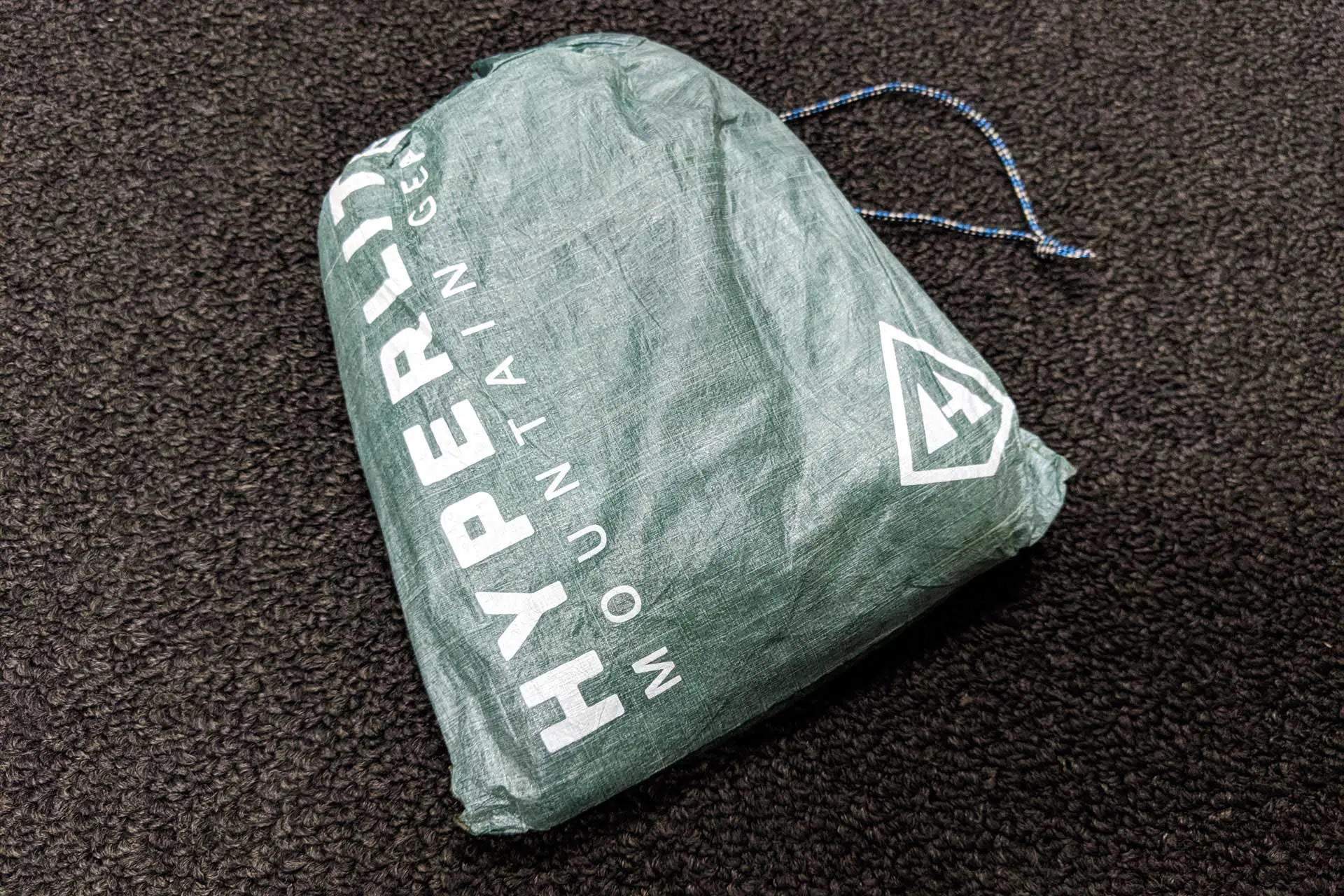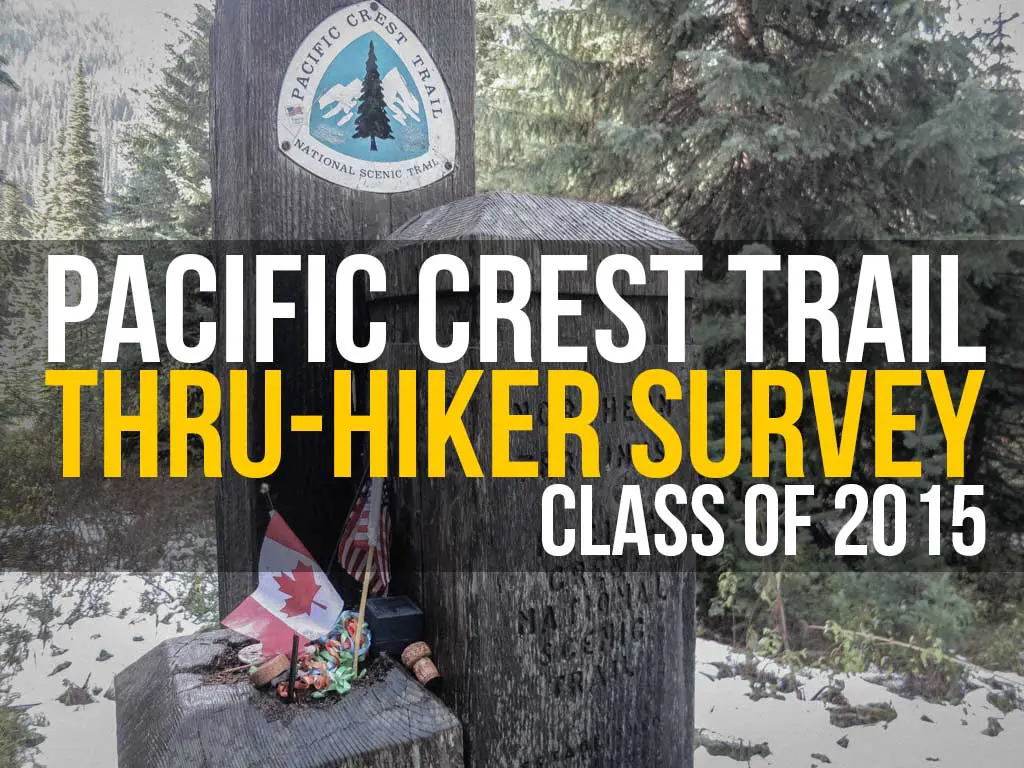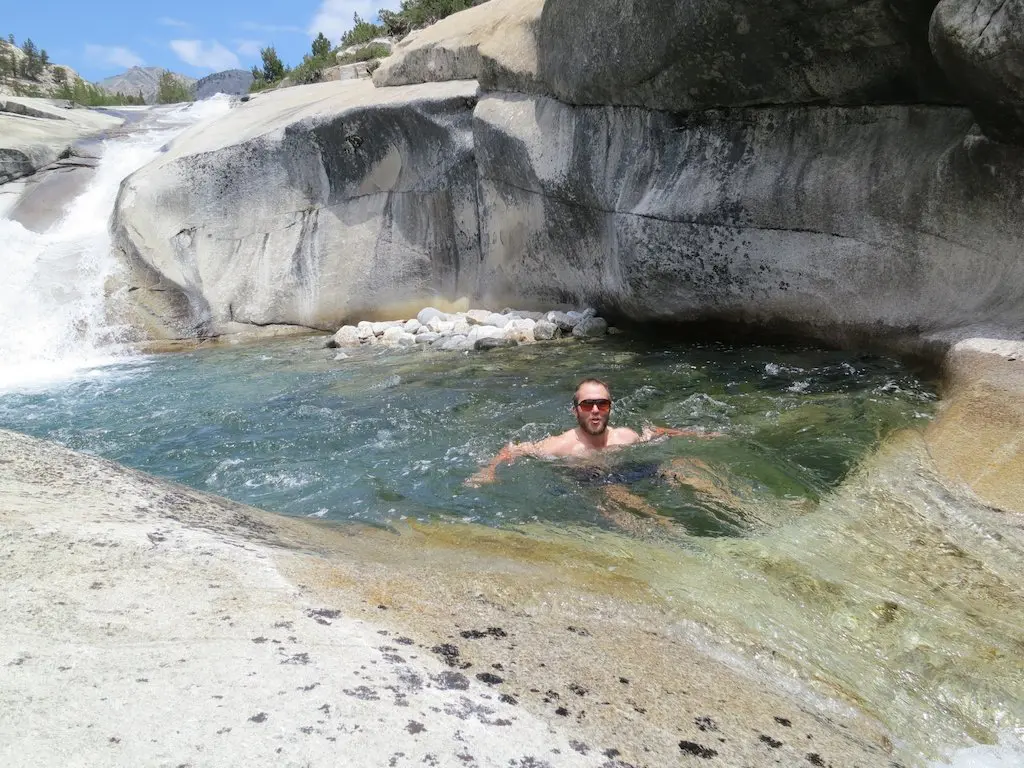The Pacific Crest Trail Hiker Survey (2021)
After an interesting year of Pacific Crest Trail thru-hiking and PCT survey results in 2020, we’re back up and running with a (more) normal year in 2021. The PCT Survey is in its ninth year and I would like to extend a huge THANK YOU to everyone who took the time to participate.
The PCT Survey is meant to be a useful resource to (actually) help those of you interested in hiking the Pacific Crest Trail figure out how the hell to approach such a monstrous journey. Every year, I try to improve the data collected and fine-tune the presentation to best help hikers. I would love to hear what you think in the comments below.
Congratulations on arriving at a spot in the PCT Survey that most readers have probably skipped. Here are the results of Halfway Anywhere’s 2021 Pacific Crest Trail Hiker Survey!

Notes on the data
- This year’s survey boasts 654 completed surveys—a 41% increase over last year.
- Some responses are sorted and colored to make the data friendlier (e.g., northbound vs. southbound).
- I ask that respondents do their best to accurately respond to the survey. Not every person answers every question, and not every answer is guaranteed to be 100% accurate (e.g., someone may mistakenly report 11 instead of 12 zero days).
- I refer to survey respondents collectively as this year’s “class“. Remember, this is a sample and not a comprehensive survey of every person on the PCT.
- This survey does invoke some math. I suggest you familiarize yourself with the words average, median (M), and standard deviation (σ).
- For statistics requiring the length of the PCT for a calculation (e.g., mileage per day), I use 2,660 mi / 4,280 km.
- More detailed posts focused on PCT Gear (including breakdowns of women-specific gear and couples’ gear), PCT Resupply, PCT Demographics, PCT Horror Stories, and PCT Advice in the coming weeks. If you would like to be notified of new surveys, click here.
LABELS differentiating hiker segments:
- THRU: Thru-hikers (all)
- THRU-0: Thru-hikers who did NOT complete the PCT
- THRU-1: Thru-hikers who completed the entire PCT
- NOBO: Northbound thru-hikers (all)
- NOBO-0: Northbound thru-hikers who did NOT complete the PCT
- NOBO-1: Northbound thru-hikers who completed the PCT
- SOBO: Southbound thru-hikers (all)
- SOBO-0: Southbound thru-hikers who did NOT complete the PCT
- SOBO-1: Southbound thru-hikers who completed the PCT
If NO LABEL has been appended to a data point, then I used all data collected (i.e., it includes section hiker data in addition to thru-hiker data).
Demographics
First, we look at information from the Pacific Crest Trail Class of 2021 that isn’t going to help anyone plan a thru-hike, but that’s interesting nonetheless. I delve deeper into the demographics of each year’s class in a subsequent post, but I cover the basics here to provide a picture of what the makeup of this year’s class was. We’ll look at PCT hiker gender, age, race, education, sexual orientation (added this year), country/state of origin, and employment (including how hikers were able to have time enough off to hike the PCT).
PCT Hiker Gender
- 56.8% Male
- 42.6% Female
- 0.5% Non-binary

PCT Hiker Age
- 0.7% < 20
- 12.98% 20-24
- 25.79% 25-29
- 20.7% 30-34
- 7.54% 35-39
- 9.12% 40-49
- 12.11% 50-59
- 10.35% 60-69
- 0.7% >70
Average age: 37
Median age: 31
σ: 14

PCT Hiker Race
- 86.5% White
- 3.7% Two or More Races
- 3.2% Hispanic or Latino
- 2.8% Asian
- 0.4% Black or African American
- 0.4% American Indian or Alaska Native
- 3% Decline to answer

PCT Hiker Education
- 52.2% Bachelor’s degree
- 18% Master’s degree
- 9.6% Some college (no degree)
- 6.8% Associate degree
- 3.7% High school or equivalent
- 3.2% PhD
- 2.5% MBA
- 1.1% MD
- 0.7% 12th grade or less
- 0.5% JD
- 0.2% Trade school
- 0.2% Doctorate
- 0.2% DNP
- 1.2% Decline to answer

PCT Hiker Sexual Orientation
- 81.2% Heterosexual (straight)
- 7.2% Bisexual
- 2.3% Pansexual
- 1.8% Asexual
- 1.3% Gay
- 1.1% Lesbian
- 0.9% Queer
- 4.3% Decline to answer

Where Hikers Are From
With its growing popularity, the Pacific Crest Trail attracts people from across the United States and the world. Here’s a look at where hikers on the trail this year hailed from.
- Australia, Austria, Belgium, Brazil, Canada, China, Colombia, Czechia, France, Germany, Israel, Lithuania, Mexico, Mongolia, Netherlands, New Zealand, Switzerland, United Kingdom, United States, Uzbekistan (20 TOTAL)
Worldwide Pacific Crest Trail hiker distribution

A look at where hikers are from in Europe

PCT Hiker US States & Territories
Alabama, Alaska, Arizona, California, Colorado, Connecticut, District of Columbia, Florida, Georgia, Hawaii, Idaho, Illinois, Indiana, Kansas, Kentucky, Louisiana, Maine, Maryland, Massachusetts, Michigan, Minnesota, Mississippi, Missouri, Montana, Nebraska, Nevada, New Hampshire, New Jersey, New Mexico, New York, North Carolina, Ohio, Oklahoma, Oregon, Pennsylvania, Rhode Island, South Carolina, South Dakota, Tennessee, Texas, Utah, Virginia, Washington, Wisconsin, Wyoming (45 TOTAL)

THE MOST-REPRESENTED COUNTRIES
- USA – 90%
- Canada – 3.3%
- Germany – 1.3%
- Netherlands – 0.9%
- United Kingdom – 0.9%
THE MOST-REPRESENTED STATES
- California – 21.5%
- Washington – 13.8%
- Oregon – 7.2%
- Texas – 4.5%
- Colorado – 3.7%
Hiker Jobs & Working Conditions
How are you able to take so much time off to hike for five months across the United States? Probably a question most would-be Pacific Crest Trail hikers have been asked. I asked hikers what they do for work (when they’re not being incredible hiking machines) and how they were able to take time off to hike the PCT.
PCT Hiker Jobs
This year, hikers reported 91 different professions. The most common of which were:
- 4.7% Engineer
- 4.7% Software Engineer
- 4.3% Registered Nurse
- 3.6% Project Manager
- 3.4% Seasonal Work
- 3.4% IT
- 3.2% Bartender
- 2.8% Scientist
13% (larger than any single profession) reported being retired and 5.1% were students. More on this in the next section.

PCT Hiker Working Conditions
How was this year’s class able to take time off to hike the PCT?
- 37.3% Quit job
- 13.8% Retired
- 11.2% Flexible work conditions
- 7.1% Unemployed
- 5.4% Sabbatical
- 5.1% Unpaid time off
- 5.1% Between jobs
- 4.2% Gap year
- 4.2% Student
- 2.7% Seasonal Worker
- 2.4% Negotiated into employment
- 1.1% Post college graduation
- 0.4% Leave of Absence

Hiker Experience
Here’s a look at what the 2021 class looked like during their “Planning a PCT Hike” phase. This section examines first-time hikers, hiker experience level, and other trails hiked.
First long-distance hike?
Instead of asking respondents whether this would be/was their first long-distance hike, I ask the distance of respondents’ longest hike to date (pre-PCT) – more on the specifics of this below. I decided to use 100 mi / 160 km as the cutoff for being considered to have completed a long-distance hike (sorry, Wonderland Trail hikers). If you want to yell at me for the arbitrary number I chose here (or suggest a better one), feel free to do so in the comments at the end of this post.
First Time Hikers
- 53.2% Yes
- 46.8% No
Average longest trail hiked: 371
Median: 90

PCT Hiker Experience
In addition to asking the longest trail completed by hikers pre-PCT, I ask respondents to evaluate their level of backpacking experience on a scale of 1 to 10.
- Average experience: 5.77
- Median experience: 6
- σ: 2.84
THRU-1: 5.52 (σ = 2.85)
THRU-0: 5.87 (σ = 2.82)

Previous Trails Hiked
The trails most commonly hiked by those with experience were:
- 24.5% PCT Section Hike
- 23.4% John Muir Trail
- 19.3% Appalachian Trail
- 11.7% Colorado Trail
- 11.3% AT Section Hike
- 7.9% Tahoe Rim Trail
- 6% Camino de Santiago
- 6% Long Trail
- 4.9% Pacific Crest Trail
- 4.2% Superior Hiking Trail
- 3% Arizona Trail
- 2.3% CDT Section Hike

Note: these percentages are of the hikers who have already completed a long-distance hike, not of the entire class.
Pre-hike Training
Next, we’ll look at whether this year’s class trained in preparation for their thru-hikes, what they did to train, and how they rated their fitness (pre-PCT).
Did hikers train?
- 72.1% Yes
- 27.95% No
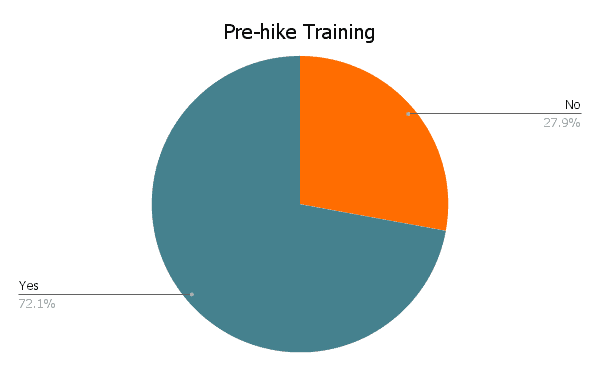
How Hikers Trained
- 48.4% Day Hikes
- 18.3% Running
- 13.6% Multi-day Hikes
- 6.2% Bicycling
- 4.7% Cross-Training
- 4% Weight Training
- 3.5% Step Machine
- 1.5% Other
“Other” mostly consisted of swimming and mobility exercises.

Pre-trail Fitness Level
I asked hikers to rate their level of fitness (on a scale of 0 to 10) before beginning the trail.
Average fitness: 5.67
Median fitness: 6
σ: 1.76
THRU-1: 5.68 (σ = 1.79)
THRU-0: 5.28 (σ = 1.74)

Money Spent on Hike
How much does it cost to hike the Pacific Crest Trail? A question on the minds of many thru-hikers before starting their journeys. The safe answer? More than you think. I have written a post on PCT costs, but the aggregate (estimated) data from this year’s class will likely paint a better picture.
THRU-1
$7,995
The average amount spent on the entirety of a thru-hike
M = $7,500 | σ = $3,554
THRU-1
$53
The average amount spent per day on a thru-hike
M = $51 | σ = $21
THRU
$1,435
The average amount spent on gear before starting
M = $1,200 | σ = $1,098


THRU-1
$7,981
Average spent by domestic thru-hikers
M = $7,000 | σ = $3,688
THRU-1
$8,189
Average spent by international thru-hikers
M = $8000 | σ = $2,634
This year, I asked Pacific Crest Trail hikers if they encountered any unexpected expenses while hiking the PCT. Because even if you purchase and test all your gear beforehand and pre-package all of your resupplies (I strongly recommend against this strategy), you can’t ever predict what’s going to happen during a PCT thru-hike.
Surprise Expenses Encountered
- 51% Yes
- 49% No
Unexpected expenses fell into basically three categories: gear replacements, hotel stays, and travel along the trail. However, a few hikers did report some towns being unexpectedly pricey and medical expenses in addition to these three larger reasons.

Unexpected Expense Breakdown
45.3% Replacing gear
- 32.9% replacing failing gear
- 12.4% replacing hated gear
37.8% Hotel stays
- 11.1% due to fires
- 10.7% due to weather
- 10.7% due to injury
- 5.3% due to illness
12.4% Travel along the trail
- 9.3% due to fires
- 1.8% due to weather
- 0.9% due to personal reasons
- 0.4% due to injury
2.7% Towns more expensive than expected
1.8% Medical expenses

Hiking Partners & Alone Time
Beginning a thru-hike on your own can sound scary and intimidating, but every year, the majority of thru-hikers (and hikers in general) began their hikes alone. Here, we’ll look at who hikers began with, how much time they spent hiking and camping alone, whether they stayed with their hiking partner(s), hiking group sizes, and hiker relationships.
Did hikers begin alone?
- 66.8% Yes
- 16.2% Began with a friend(s)
- 15% Began with a partner or spouse
- 1.5% Arranged to start with other hikers (whom they had not met before beginning the PCT)
- 0.5% Began with family member(s)
Of this year’s first-time thru-hikers, 68.6% began their hikes alone (the data above/in the graph is for all hikers).

Percentage of time hiking alone
- 6.9% – 0%
- 4% – 1-9%
- 6.2% – 10-24%
- 7.5% – 25-49%
- 22.7% – 50-74%
- 23.4% – 75-89%
- 25.5% – 90-99%
- 3.7% – 100%
63.7% – Average time thru-hikers spent hiking alone
σ = 30.7 | M = 75%

“Hiking alone” measures the amount of time that hikers weren’t physically walking with someone down the trail. It does not necessarily imply they weren’t hiking with others throughout the day (i.e. camping with others).
Percentage of nights camping alone
- 21.46% – 0%
- 23.33% – 1-9%
- 16.02% – 10-24%
- 14.46% – 25-49%
- 12.91% – 50-74%
- 5.44% – 75-89%
- 4.82% – 90-99%
- 1.56% – 100.00%

23% was the average percentage of nights thru-hikers, spent camping alone (σ = 27 | M = 10). When we look at thru-hikers who finished, this translates to an average of 29 nights spent camping alone (down 10 nights from last year).
Sticking With Hiking Partner(s)
Beginning a hike with someone is one thing, but managing to remain together and finishing a hike with someone is arguably as impressive as the trail itself. Here’s how things worked out for those who began their hikes with another person.
Did hikers remain with partner(s)?
- 60.5% Yes
- 17.9% Yes, for the most part
- 8.8% No, we decided it wasn’t for the best
- 6.2% No, partner got off
- 5.6% No, this was never the plan
- 1% No, we’re no longer friends

Size of Hiking Groups
Despite the majority of hikers beginning their Pacific Crest Trail hikes alone, most hikers will link up and hike with at least one other person for a considerable amount of their time on the PCT. Some hikers refer to this as a trail family or “tramily“. Here are the largest groups hikers found themselves hiking with on a regular basis.
Average group size: 5.7
Median size: 5
σ: 4.3

Relationship Status
- 47.8% Yes, and I am still with the same person
- 38.4% No, and I am still single
- 6.2% No, but now I am in a relationship with someone I met on the PCT
- 3.3% Yes, but I am now single
- 2.3% Yes, but now I am in (a different) relationship with someone I met on the PCT
- 1.4% No, but now I am in a relationship with someone I met before the PCT
- 0.6% Yes, but now I am in (a different) relationship with someone I met before the PCT

Permits & Starting Dates
It sometimes seems like the rules for obtaining and possessing a Pacific Crest Trail permit are constantly evolving. This year, things were a lot more straightforward than last year, and once again northbound permit slots for March, April, and May all filled up quickly. If everything operated exactly as the official permits would dictate, there would be 50 people beginning northbound hikes every day from the southern terminus in Campo.
All thru-hikers who filled out the survey reported having obtained a permit. Is this a good thing? Yes. Do I necessarily believe it? Maybe. I’ll be tweaking the permit questions for next year’s survey to attempt to capture some of the finer details associated with permits/start dates (e.g. actual start date, permit changes, and cancellations).
Here we look at whether hikers got permits for the start dates they wanted, whether they began their hikes on their permit start dates, and what the average start dates were for finishers and those who wish they had started earlier or later.
Did hikers receive a permit for the day they wanted?
Permits for the PCT are (generally) issued in two phases and require you to be online at a designated time as hikers are randomly allowed to request permit start dates. I asked this year’s class whether they got a permit for the date they wanted and whether they were happy with their permit’s date.
- 75.2% Yes, received permit for date hoped for
- 8.3% No, but happy with date
- 5.1% Yes, +/- 5 days of date hoped for
- 5.4% Yes, +/- 3 days of date hoped for
- 2.8% Yes, +/- 1 day of day hoped for
- 3.3% No, unhappy date

Start on permit date?
- 79% Yes
- 21% No

Hiker Start Dates
NOBO
April 16
Average starting date
NOBO
March 30
Average starting date of hikers who said they would like to have started later
NOBO
April 29
Average starting date of hikers who said they would like to have started earlier
SOBO
July 3
Average starting date
SOBO
June 25
Average starting date of hikers who said they would like to have started later
SOBO
July 9
Average starting date of hikers who said they would like to have started earlier
Hiking Stats & Dates
The Pacific Crest Trail is generally considered to have five sections: the Desert, the Sierra, Northern California, Oregon, and Washington.
Kennedy Meadows is the Desert/Sierra division (despite the Sierra range technically beginning further south), and Echo Lake/South Lake Tahoe is commonly considered the Sierra/Northern California division (and yes, the Sierra technically continues north). Basically “the Sierra” section of the PCT can also be considered “the section of the PCT that is most commonly filled with snow for the largest number of hikers (i.e. northbound hikers)”. That said, the “Sierra” section of the survey (for the purposes of the question) measures the distance from Kennedy Meadows to Sierra City. I will be changing this in next year’s survey.
In this section, we look at how long thru-hikers took for each section of the trail, a breakdown of hike lengths and averages, and a look at how many days hikers took off (zero/nearo days).
NOBO Section Length
- 44 (NOBO-1) – Average days to complete the Desert
- 35 (NOBO-1) – Average days to complete the Sierra
- 22 (NOBO-1) – Average days to complete Northern California
- 21 (NOBO-1) – Average days to complete Oregon
- 28 (NOBO-1) – Average days to complete Washington
- 150 (NOBO-1) – Average days to complete the PCT

SOBO Section Length
- 32 (SOBO-1) – Average days to complete Washington
- 18 (SOBO-1) – Average days to complete Oregon
- 40 (SOBO-1) – Average days to complete Northern California + the Sierra
- 42 (SOBO-1) – Average days to complete the Desert
- 132 (SOBO-1) – Average days to complete the PCT
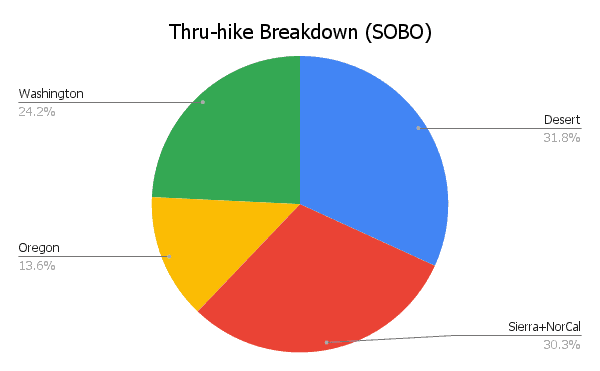
Length of Thru-hikes
THRU-1
149
The average number of days of an entire thru-hike
(M = 150 | σ = 20)
THRU-1
131
The average number of days hiking (total minus zero days)
(M = 130 | σ = 18)
NOBO-1
9/16
The average finish date (16/9 for the rest of the world)
(M = 9/16 | σ = 20)
THRU-1
18 mi
The average daily mileage (29 km)
(σ = 3 mi / 4.8 km)
THRU-1
21 mi
The average daily mileage after removing zero days (33.8 km)
(σ = 3 mi / 4.8 km)
THRU-1
38.5 mi
The average longest day of hiking (62 km)
(M = 35 | σ = 10.8 mi / 17.4 km)
Zero and Nearo Days (i.e. days off)
THRU-1
19
The average number of zero days (days off from hiking)
(M = 19 | σ = 9)
THRU-1
15
The average number of nearo days (low mileage days)
(M = 15 | σ = 9)
THRU-1
5.5
The average longest consecutive number of zero days
(M = 4 | σ = 4.8)
Flip-flopping, Completion Rates, & Footpaths
Flip-flopping is when a hiker skips a section of the trail (the flip) intending to come back to hike it later (the flop). This can happen because a hiker wants to avoid snow, skip a fire closure, or because of some other logistical issue. The flip-flop usually takes one of two forms.
One is a hiker skipping ahead, continuing to hike the same direction, and then returning to the point they originally departed the trail to hike the skipped section later (e.g. a northbound hiker skips from the CA/OR border to the OR/WA border, then hikes north to Canada before returning to the CA/OR border to hike north to the OR/WA border).
It can also be when a hiker skips ahead and then hikes the skipped section in the opposite direction of their original hike before jumping back up to the point where they originally skipped to and continuing their hike in the original direction (e.g. northbound hiker jumps from CA/OR border to OR/WA border and then hikes south to CA/OR border before returning to OR/WA border to continue hiking north).
Some hikers get wild with their flip-flopping (I recommend avoiding it if possible) and there are now rules in place that invalidate PCT permits for the Sierra if hikers fail to hike this section continuously (hikers can still flip-flop and get local permits to legally hike the Sierra).
Here is what flip-flopping on the PCT looked like in 2021.
Did hikers flip-flop?
THRU 7.43% Yes
THRU 92.57% No
NOBO 6.89% Yes
NOBO 93.11% No
SOBO 13.30% Yes
SOBO 86.70% No

Why did hikers flip-flop?
- 38.9% Personal/Logistical
- 30.6% Fires
- 16.7% To meet/stay with a friend/hiking partner
- 5.6% Injury
- 2.8% Snow
- 2.8% Trail Days
- 2.8% Weather

Where did hikers flip from/to?


PCT Completion Rates
Most people begin a Pacific Crest Trail thru-hike intending to complete the trail. Unfortunately (or in some cases, fortunately), not everyone who sets out on this most epic adventure of border-to-border glory completes the trail. Every year a large percentage of people hoping to hike the PCT will fail to complete the trail.
We’re going to look at completion rates, but we are doing so with a caveat. Since I distribute this survey myself, and because it is not required of PCT hikers, survey respondents are a self-selecting group who (likely) skew toward having completed the trail. A hiker who quit during their first week of hiking back in March or April is probably paying little attention and caring far less about the Pacific Crest Trail survey when it’s released in the fall.
THRU
76.2%
The percentage of thru-hikers who completed the PCT.
NOBO
79.5%
The percentage of northbound thru-hikers who completed the PCT.
SOBO
41.3%
The percentage of southbound thru-hikers who completed the PCT.
It may sound straightforward enough, “Did you complete the PCT? Yes or no?” – but what constitutes a completed thru-hike isn’t necessarily the same for everyone.
Some people insist you need to have unbroken steps between Mexico and Canada along the official Pacific Crest Trail to constitute a thru-hike while others may forgive skipping a road walk, hitchhiking around a fire closure, or taking some alternates (or shortcuts).
To get a better idea of how much of the trail this year’s finishers hiked, I asked about their footsteps between the terminuses.
Did hikers complete a continuous and unbroken footpath between Mexico and Canada?
- 43.6% Yes, but I skipped the fire closures
- 21.1% Mostly, but I may have missed a few miles
- 11.7% – Yes, and I road walked around any fire closures
- 13.6% No, I skipped or hitched past small sections of trail
- 10.1% No, I skipped or hitched past large sections of trail

Alternate Routes
The Pacific Crest Trail is well-defined, but there are several alternate trails (sometimes known as “shortcuts”) hikers can take either instead of or in addition to the official PCT. I ask about these alternates to get an idea of what the most common PCT thru-hikes looked like. Alternates are listed in geographical order from south to north.
The following colors indicate the popularity of each alternate (the percentage of hikers who took each): OVER 75%, 50-75%, 25-50%, UNDER 25%.
DESERT ALTERNATES
- Spitler Trail (south of Idyllwild) – 6.2%
- South Ridge Trail (to/from Idyllwild) – 1.2%
- Devil’s Slide Trail (to/from Idyllwild) – 45.8%
- Deer Springs Trail (to/from Idyllwild) – 5.6%
- Marion Mountain Trail – 0.4%
- Black Mountain Road (north of Idyllwild) – 1.6%
- Cougar Crest Trail (to/from Big Bear) – 0.2%
- Acorn Trail (to/from Wrightwood) – 14.9%
- Buckhorn Camp Detour (north of Wrightwood) – 1.2%
- Upper Shake Campground – 0.4%
SIERRA ALTERNATES
- Trail Pass Trail – 9.1%
- Cottonwood Pass Trail – 18.6%
- Army Pass Trail – 3%
- New Army Pass Trail – 0.2%
- Whitney Portal Trail – 22.2%
- Kearsarge Pass Trail – 76.4%
- Sawmill Pass Trail – 0.2%
- Taboose Pass Trail – 0.6%
- Bishop Pass Trail – 7%
- Lamarck Lakes Trail – 0.2%
- Piute Pass Lakes Trail – 0.4%
- Blayney Meadows Trail – 0.4%
- Bear Ridge Trail (to/from VVR) – 20.3%
- Goodale Pass Trail (to/from VVR) – 17.7%
- Cascade/Fish Valley Trail – 0.2%
- Duck Pass Trail – 5.3%
- Mammoth Pass Trail – 31%
- Devils Postpile Trail – 34%
- John Muir Trail (between Red’s Meadow and Thousand Island Lake) – 21.3%
- Tuolumne Campground Trail – 26.4%
NORTHERN CALIFORNIA ALTERNATES
- Bucks Lake Alternate – 12.8%
- Castella Trail – 4.1%
OREGON ALTERNATES
- Callahan’s Side Trail – 30.5%
- Hyatt Lake Restaurant – 14.4%
- Mazama Campground (Crater Lake) – 59.2%
- Crater Lake Rim Alternate – 84.9%
- Shelter Cove Trail – 57.5%
- Elk Lake Resort Trail – 26.7%
- Big Lake Youth Camp Trail – 14.7%
- Eagle Creek Trail – 62.9%
WASHINGTON ALTERNATES
- Stevenson Roadwalk – 1.8%
- Old PCT Route past Old Snowy Mountain – 35.2%
- Goldmyer Hot Springs Alternate – 1.6%
- Holman Fire Detour – 1.4%
Not an alternate, but instead a side trip (an out-and-back from the PCT), hikers on the Pacific Crest trail pass just west of Mount Whitney in the Southern Sierra. The highest peak in the Continental United States at 14,505 ft / 4,421 m, it’s a tempting investment of time that most hikers take advantage of (the trip up from the PCT is easier, shorter, and less crowded than the trip up from the Whitney Portal Trailhead on the eastern side).
Note: A PCT permit allows you to day hike Mount Whitney from the western side (i.e. the PCT). You are not permitted to exit the Sierra via Whitney Portal or camp east of the Crabtree Ranger Station (this includes Guitar Lake).
Did hikers summit Mount Whitney?
- 81% Yes
- 19% No

Why Hikers Didn’t Summit
- 33.3% Already summited (another time)
- 27.4% No interest in summiting
- 16.7% Weather
- 8.3% Problems with altitude
- 6% Physical issues
- 4.8% Not enough food
- 2.4% To stay with friends
- 1.2% Trail closure

Hiker Challenges
This year, I asked Pacific Crest Trail hikers about some of the challenges they endured on the trail. Here, we’ll see which Sierra passes hikers found most challenging, which hikers found to be easiest, and how hikers coped with a variety of factors including storms, fires, mosquitoes, and stream crossings.
Most Challenging Passes
- 40% Glen Pass
- 32% Pinchot Pass
- 31% Muir Pass
- 26% Kearsarge Pass
- 20% Forester Pass
- 13% Mather Pass
- 7% Donohue Pass
- 5% Silver Pass
- 5% Benson Pass
- 4% Selden Pass

Easiest Passes
- 35% Island Pass
- 34% Dorothy Lake Pass
- 21% Selden Pass
- 20% Donohue Pass
- 19% Silver Pass
- 18% Forester Pass
- 14% Benson Pass
- 13% Muir Pass
- 12% Mather Pass
- 12% Cottonwood Pass

On-trail Issues
I asked hikers, on a scale of 1 to 10, how much of an issue each of the following was during their hikes.
- 6.05 Smoke/Fire
- 5.13 Heat
- 4.16 Mosquitoes
- 3.09 Wind
- 2.94 Cold
- 2.49 Elevation
- 2.39 Rain/Hail
- 1.8 Storms/Lightning
- 1.31 Stream Crossings
- 1.31 Rodents
- 1.27 Snow

Why Hikers Didn’t Finish
In case you were left wondering what happened to the hikers who didn’t complete the PCT this year when we covered completion rates above, fear not. Here we look at the specifics as to why hikers didn’t complete the Pacific Crest Trail this year.
Why Hikers Got off the Trail
- 33.1% Fires
- 23.4% Injury
- 15.3% Family
- 8.9% Personal
- 5.6% Snow
- 4% Financial
- 4% Work
- 4% Illness
- 0.8% Weather
- 0.8% Visa

Hike-ending injuries and where they occurred
Injury is a big killer of thru-hikes and is typically something hikers can exercise some control over. Here, we break down what kinds of injuries ended hikes and where these hike-ending injuries occurred.
Hike-Ending injuries
- 38.5% Overuse injury (foot)
- 19.2% Overuse injury (leg)
- 11.5% Plantar fasciitis
- 11.5% Stress fracture (foot)
- 7.7% Stress fracture (leg)
- 3.9% Knee issues
- 3.9% Broken bone (leg)
- 3.9% Blisters
Where injuries occurred
- 46.2% The Desert
- 26.9% The Sierra
- 3.9% Northern California
- 11.5% Oregon
- 11.5% Washington

Miles completed by hikers who didn’t finish the PCT
- 4% – < 100 mi / 160 km
- 11.3% – 100 to 500 mi / 160 to 805 km
- 27.4% – 500 to 1,000 mi / 805 to 1,609 km
- 33.1% – 1000 to 1,500 mi / 1,609 to 2,414 km
- 11.3% – 1500 to 2,000 mi / 2,414 to 4,023 km
- 12.9% – > 2,000 mi / 4,023 km
Average: 1,103 mi / 1,775 km
Median: 1,000 mi / 1,609 km
σ = 635 mi / 1,022 km

Resupply
The word “resupply” can be anxiety-inducing if you’re new to the idea of long-distance thru-hiking. What is resupply? Where does it come from? How much of it is there? How do you get it? Will it hurt?
Resupply is getting yourself more food to power more hiking. It need not be scary or intimidating. Resupply on a Pacific Crest Trail has become more simple over the years, but when and where hikers resupply is still a question that many find overwhelming.
Here we have this year’s resupply stats, resupply strategy/boxes, resupply box suggestions, hitchhiking difficulties, where hikers resupplied, favorite and least favorite resupply stops, favorite meals and snacks, and resupply advice.
PCT Resupply Stats
THRU-1
31.31
The average number of resupplies over the entire trail
(M = 31 | σ = 5.1)
THRU-1
4.8
The average number of days between resupplies
(M = 4.7 | σ = 1)
THRU-1
87.3
The average number of miles between resupplies (140.5 km)
(M = 85.8 mi / 138.1 km | σ = 15.5 mi / 24.9 km)
THRU
4.2
The average number of resupply boxes prepared ahead of time
(M = 2 | σ = 6)
THRU-1
8
The average total number of resupply boxes sent
(M = 6 | σ = 6.5)
THRU-1
25%
The average percent of resupplies sent as boxes
(M = 15% | σ = 25%)
Thru-hiker Resupply Strategy
- 2.7% Mailed ALL resupplies
- 10.2% Mailed MOST resupplies (> 50%)
- 48.4% Mailed SOME resupplies (10-50%)
- 30.2% Mailed A FEW resupplies (1-10%)
- 8.4% Mailed NO resupplies

Most hikers concern themselves a lot about resupply but remember that you can mail yourself boxes from on the trail. You do not have to have ALL your resupply boxes prepared ahead of time. Many towns have supermarkets (and post offices).
That said, it can be helpful (and oftentimes time-saving) to mail yourself resupply boxes. Hikers may choose this option because of a resupply stop’s limited food selection, dietary restrictions, high prices, or even the owners of the local resupply establishment being awful people (I’m looking at you, Acton KOA).
Something else to consider when thinking about resupply is the fact that many towns along the PCT are only accessible via car (or ludicrously long, dangerous, and ill-advised road walks). How do you get to these towns? Most hikers elect to hitchhike.
Here are the places hikers say they recommend sending a resupply box and where they had difficulty hitchhiking to/from.
Suggest Mailing Resupply
- Stehekin (Washington) 78.7%
- Kennedy Meadows General Store/Grumpy Bears Retreat* (Sierra) 42.2%
- Crater Lake National Park (Oregon) 38.7%
- White Pass (Washington) 34.2%
- Snoqualmie Pass (Washington) 31.3%
- Acton KOA (Desert) 30.3%
- Sierra City (Northern California) 24.6%
- Stevens Pass/Skykomish (Washington) 24.6%
- Shelter Cove Resort 23.1%
- Warner Springs (Desert) 20.1%
*Kennedy Meadows/Grumpy Bears Retreat is where most hikers begin carrying bear canisters. The most popular bear canister from this year? (And every year.) The BV500. I’m a fan of the BV450, but more on that in the gear guide.

Difficult Hitches
- Etna (Northern California) 6.7%
- Bishop (Sierra) 5.7%
- Cabazon (Desert) 5%
- Yosemite Valley (Sierra) 4.2%
- Leavenworth (Washington) 3.2%
- Mount Shasta (Northern California) 3.2%
- Bend (Oregon) 3%
- Big Bear Lake (Desert) 3%
- Chester (Northern California) 3%
- Packwood (Northern California) 3%

Where Hikers Resupplied
I ask hikers to report on where they resupplied – not where they stopped/passed through, but where they actually purchased, picked up, were given, or otherwise came into a new stock of food. For example, the trail passes through the middle of Agua Dulce; theoretically, all thru-hikers who complete the trail will go there, but not all thru-hikers resupply there. Make sense? I hope so. If you’re struggling with this, you’ll have issues on the trail.
Locations are listed in geographical order from Mexico to Canada (that’s south to north) and, again, I use the following colors to indicate each resupply stop’s popularity: OVER 75%, 50-75%, 25-50%, LESS THAN 25%.
DESERT RESUPPLY
- Campo (10.5%)
- Lake Morena (0.2%)
- Mount Laguna (44.2%)
- Julian (65.1%)
- Warner Springs (58.3%)*
- Paradise Cafe (16.8%)
- Idyllwild (86.5%)
- Cabazon (24.9%)
- Banning (0.4%)
- Palm Springs (0.6%)
- Big Bear City (37.2%)
- Big Bear Lake (58.5%)
- Wrightwood (82.1%)
- Acton KOA (54.4%)*
- Acton (12.5%)
- Agua Dulce (21.6%)
- Palmdale (0.6%)
- Lancaster (0.4%)
- Hikertown (34.3%)
- Wee Vill Market (14.7%)
- Tehachapi (88.9%)
- Mojave (4.5%)
- Lake Isabella (12.5%)
- Kernville (15.4%)
- Ridgecrest (27.9%)
SIERRA RESUPPLY
- Kennedy Meadows (57.5%)*
- Grumpy Bears Retreat (48.5%)*
- Triple Crown Outfitters (1.9%)
- Lone Pine via Horseshoe Meadow (20.3%)
- Independence via Horseshoe Meadow (2.1%)
- Bishop via Horseshoe Meadow (2.7%)
- Lone Pine via Kearsarge Pass/Onion Valley (9.2%)
- Independence via Kearsarge Pass/Onion Valley (10.4%)
- Bishop via Kearsarge Pass/Onion Valley (67.2%)
- Muir Trail Ranch (3%)
- Bishop via Bishop Pass/South Lake (6.2%)
- Bishop via Piute Pass/North Lake (0.2%)
- Vermilion Valley Resort (34.9%)
- Red’s Meadow (12.9%)
- Mammoth Lakes (78.1%)
- Tuolumne Meadows (56.6%)
- Yosemite Valley (15.7%)
- Lee Vining (3.2%)
- Bridgeport (3.7%)
- Kennedy Meadows North (82.7%)
- Strawberry (0.2%)
- Markleeville (1.9%)
NORTHERN CALIFORNIA RESUPPLY
- South Lake Tahoe (84.6%)
- Stateline (1.3%)
- Echo Lake (9.3%)
- Sacramento (0.6%)
- Tahoe City (3.9%)
- Soda Springs (3.2%)
- Truckee (34.9%)
- Reno (9.6%)
- Sierra City (79.2%)*
- Quincy (34.9%)
- Chico (1%)
- Chester (56.7%)
- Belden (34%)
- Drakesbad Guest Ranch (5.8%)
- Old Station (34.9%)
- Burney Mountain Guest Ranch (1.6%)
- Burney Falls (20.5%)
- Burney (67%)
- Castella (12.8%)
- Dunsmuir (31.7%)
- Mount Shasta (56.1%)
- Etna (81.7%)
- Seiad Valley (78.5%)
OREGON RESUPPLY
- Callahan’s (10.7%)
- Ashland (88.4%)
- Medford (0.9%)
- Fish Lake (11.3%)
- Lake of the Woods Resort (1.5%)
- Crater Lake (Mazama Village Store) (85.4%)*
- Diamond Lake Resort (1.5%)
- Shelter Cove Resort (79.8%)*
- Odell Lake Resort (0.9%)
- Elk Lake Resort (15.8%)
- Sisters (21.7%)
- Bend (69.9%)
- Big Lake Youth Camp (1.8%)
- Olallie Lake Resort (4.5%)
- Government Camp (9.8%)
- Timberline Lodge (23.8%)
- Cascade Locks (71.7%)
- Hood River (11%)
- Portland (19.4%)
WASHINGTON RESUPPLY
- Trout Lake (78.7%)
- White Pass (77.8%)*
- Packwood (17%)
- Snoqualmie Pass (92.3%)*
- Stevens Pass (45.3%)*
- Skykomish (31.9%)*
- Monroe (0.5%)
- Chelan (1.1%)
- Stehekin (88.7%)*
- Mazama (11.8%)
- Winthrop (13.6)
- Leavenworth (49.3%)
- Rainy Pass (0.2%)
- Harts Pass (0.2%)
- Seattle (6.8%)
*stops where this year’s class suggests sending resupply boxes to
Favorite & Least Favorite Resupply Stops
Now we know the most popular stops for resupplying and for sending resupply boxes, but what about hikers’ favorite and least favorite resupply stops? When asking this question I specify “‘Favorite/Least Favorite’ means where you most/least enjoyed, not where had the best/worst resupply options (although these could be the same).”
FAVORITE RESUPPLY STOP
Idyllwild, CA
Desert (57.1%)
LEAST FAVORITE RESUPPLY STOP
Seiad Valley, CA
Northern California (23.6%)
FAVORITE RESUPPLY STOPS
- DESERT: Idyllwild (57.1%)
- SIERRA: Bishop (53.4%)
- NORCAL: Etna (34.2%)
- OREGON: Ashland (53.4%)
- WASHINGTON: Stehekin (40.7%)
RUNNERS-UP
- DESERT: Wrightwood (35.5%)
- SIERRA: Mammoth Lakes (41.7%)
- NORCAL: South Lake Tahoe (25.3%)
- OREGON: Bend (40.7%)
- WASHINGTON: Leavenworth (30%)
LEAST FAVORITE RESUPPLY STOPS
- DESERT: Acton KOA (20.8%)
- SIERRA: Grumpy Bears Retreat (11.17%)
- NORCAL: Seiad Valley (23.6%)
- OREGON: Crater Lake National Park (17.4%)
- WASHINGTON: Stehekin (7.7%)
RUNNERS-UP
- DESERT: Hikertown (19.1%)
- SIERRA: Kennedy Meadows (8.7%)
- NORCAL: Belden (12.7)
- OREGON: Shelter Cove Resort (7.2%)
- WASHINGTON: White Pass (6.5%)
Favorite Meals & Snacks
For the final piece of the resupply puzzle, we take a look at hiker dietary restrictions, how easy they found resupplying with these restrictions, and which meals and backpacking snacks hikers enjoyed most out on the PCT. More on this to come in the PCT Resupply Guide.
PCT Dietary Restrictions
- 34.3% Yes
- 65.7% No

Specific Dietary Restrictions
- 44.4% Vegetarian
- 22.9% Vegan
- 19% Pescatarian
- 17% Dairy Free
- 9.8% Gluten Free
- 3.9% Keto
- 2% Diabetic
- 0.7% Kosher

Trouble With Dietary Restrictions
I asked hikers with dietary restrictions, on a scale of 0 to 10 (0 being easy, 10 being difficult), how difficult it was to accommodate their diets while on the trail.
- 4.1 Vegan
- 3.7 Dairy Free
- 3.5 Gluten Free
- 3 Keto
- 3 Kosher
- 2.5 Vegetarian
- 1.9 Pescatarian
- 1.3 Diabetic

Favorite Backpacking Meals
- Mountain House 38.4%
- Backpacker’s Pantry 33.7%
- Knorr Rice Sides 28%
- Peak Refuel 18.1%
- Greenbelly Meals 16.8%
- Good To-Go 15.6%
- AlpineAire Foods 13.1%
- Food for the Sole 9.2%
- Patagonia Provisions 7.2%
- Packit Gourmet 5.7%
Favorite Backpacking Snacks
- M&M’s 35.1%
- Snickers Bars 29.8%
- Potato Chips 29.4%
- Peanut Butter 28.1%
- Lenny & Larry’s Complete Cookies 27.4%
- Honey Stinger Waffles 21.9%
- Trail Mix 21.3%
- Pop-Tarts 21.1%
- Clif Bars 19.1%
- Bobo’s Oat Bars 17.7%
Resupply Changes
Hindsight is 20/20 (unless you’re looking back through the darkness for that mountain lion you think might be following you – but that’s definitely a deer). Here is what hikers said they would change about their resupply strategies if they had the chance to do it all over again. These don’t change much from year to year, so I would highly encourage you to heed this advice when considering your resupply options.
68.6% of hikers say that they would have made changes to their resupply strategy. Here are the most popular changes hikers would have made to their PCT resupply.
- Send MORE VARIETY in boxes (25.6%)
- Send FEWER resupply boxes* (24%)
- Send HEALTHIER FOOD in boxes (22.2%)
- Send boxes from ON TRAIL instead of ahead of time (21.3%)
- Send LESS FOOD in boxes (21.3%)
*The average number of boxes sent by hikers who said they would have liked to have sent FEWER boxes was 8.5. The average was 8.
THRU
12.2%
The number of thru-hikers who went stoveless for the entirety of their hikes.
I’ll be following up this post with a more detailed breakdown of this year’s resupply. If you would like to be notified of new posts, click here. Find all PCT Resupply posts here.
Thru-hiking Gear
Potentially what Pacific Crest Trail hikers spend the most time obsessing over before (and on…and after) the trail is their thru-hiking gear. Gear choices play an essential role in a thru-hike, but there is no magical gear combination that will guarantee you a successful thru-hike (if you know otherwise, please let me know).
I do a deep dive into gear used by PCT hikers in my PCT Gear Guide, but here’s a taste of what to expect.
THRU-1
17.07 lbs
Average pre-hike base weight (7.743 kg)
(M = 16 lbs / 7.26 kg | σ = 6.3 lbs / 2.86 kg)
THRU-1
14.77 lbs
Average post-hike base weight (6.7 kg)
(M = 14 lbs / 6.35 kg | σ = 4.69 lbs / 2.13 kg)
THRU-1
-2.3 lbs
Average total change in base weight (1.04 kg)
(M = 2 lbs / 907 g)
THRU
53.9 L
Average backpack size
(M = 55)
THRU
16.8°F
Average sleeping bag rating (-8.44°C)
(M = 20°F / -6.67°C)
THRU-1
4.66
Average total number of shoes used
(M = 5)
There are more detailed and more interesting breakdowns of this information on the way in this year’s PCT Gear Guide. For now, let’s take a peek at some of the gear thru-hikers were using on the trail this year. Here are the most common “Big 4” items: packs, shelters, sleeping bags, and sleeping pads (I know it’s the “Big 3”, but I include sleeping pads, get over it) along with the most common insulated jackets and shells.
Again, there will be extensive breakdowns in the PCT Gear Guide.
Most Common PCT Backpacks
Most Common PCT Shelters
Most Common PCT Sleeping Bags/Quilts
Most Common PCT Sleeping Pads
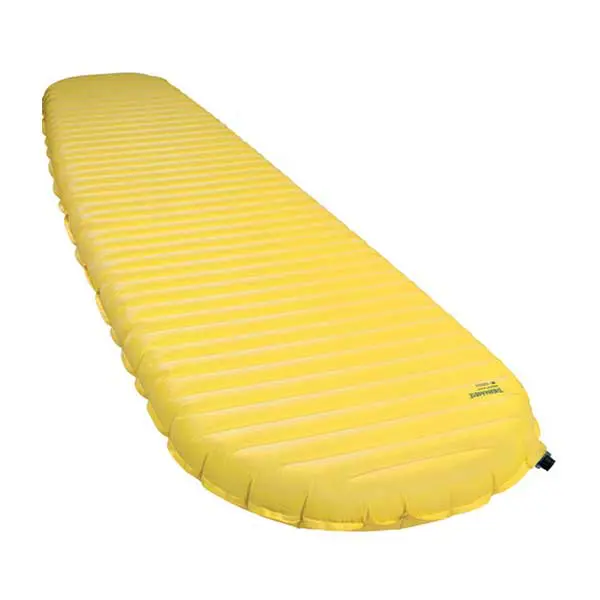
Most Common PCT Insulated Jackets
- Mountain Hardwear Ghost Whisperer 2 – Hooded (Men’s/Women’s)
- Enlightened Equipment Torrid Apex (Men’s/Women’s)
- Arc’teryx Cerium LT Hoody (Men’s/Women’s)
- Patagonia Nano Puff – Hooded (Men’s/Women’s)
- Mountain Hardwear Ghost Whisperer 2 (Men’s/Women’s)
- Patagonia Micro Puff (Men’s/Women’s)
- Patagonia Nano Puff (Men’s/Women’s)
- Patagonia Micro Puff – Hooded (Men’s/Women’s)
- REI 650 Down Jacket (Men’s/Women’s)
- Mountain Hardwear Ghost Whisperer UL (Men’s/Women’s)
Most Common PCT Shells
- Outdoor Research Helium II (Men’s/Women’s)
- Frogg Toggs Ultra-Lite 2
- Montbell Versalite (Men’s/Women’s)
- Marmot PreCip (Men’s/Women’s)
- Arc’teryx Beta SL Hybrid (Men’s/Women’s)
- REI Essential Rain Jacket (Men’s/Women’s)
- Patagonia Torrentshell 3L (Men’s/Women’s)
- Lightheart Gear Rain Jacket
- Zpacks Vertice (Men’s/Women’s)
- Enlightened Equipment Visp (Men’s/Women’s)
This is just the tip of the proverbial thru-hiking gear iceberg. As mentioned above, I will be publishing a detailed breakdown of this year’s PCT gear. This will include water treatment, stoves, fleeces, snow gear, additional gear, luxury items, what hikers didn’t like about their gear, what gear decisions (might have) helped hikers to a successful thru-hike, how hikers would change/adapt their gear for a future hike, and more. I will also be publishing a women-specific gear post and a couple-specific gear post.
If you would like to be notified when this post goes live, enter your email below.
For more on gear, check out the Ultimate Pacific Crest Trail Packing List.
Technology on Trail
Gone are the days of Pacific Crest Trail old when it was a trail sought out by only uber-experienced backcountry orienteers; thanks to the magic of technology, any dodo can grab a phone and have a reasonably good chance of not killing themselves on the trail.
Phones are everywhere on the trail. If the sight of a cellular device in the wilderness distresses you, then prepare yourself. Phones are hikers’ cameras, GPS devices, televisions, music players, town-researching devices, and (sometimes) SOS devices (that said, I suggest a Garmin inReach Mini if you’re looking for an SOS device).
There are several apps commonly used by Pacific Crest Trail hikers – and even one designed specifically for the PCT (that you should most certainly invest in). Here are the apps and phones hikers were using out on the trail this year.
PCT Hiker Phones
- 65.7% iPhone
- 34.2% Android
- 0.2% Didn’t carry a phone

PCT Hiker Apps
- 84.3% FarOut Guides (formerly Guthook)
- 11.6% Gaia
- 9.7% PeakFinder
- 4.6% Strava
- 2.2% CalTopo
- 0.5% Avenza Maps
- 0.5% Garmin Earthmate
14.8% of hikers did not report using any of these apps, although this selection was not explicit. I will be clarifying this question in next year’s survey.

Hiker Health & Water Sources
Water treatment and personal hygiene are (or should be) big considerations for hikers. Typically thru-hikers worry less about these as the trail goes on; experience isn’t always your friend.
Some hikers religiously filter all water that passes through their face hole – it doesn’t matter if it comes out of a hotel sink or a puddle with a cow pooping in it. Other hikers will “not filter in the Sierra”, “not filter above 10,000 ft / 3,048 m”, or “not filter running water” (this last one is not a good idea – running water can 100% get you sick).
Everyone wants to look cool in front of their friends by not filtering water (note: not filtering your water does not make you cool), but there are risks to the badass thru-hiker lifestyle (and to drinking dirty, giardia-infested water).
To find out how good a job everyone is doing filtering their water and sanitizing their hands after pooping (another way to get yourself sick), I ask hikers if they got sick (defined as three or more days of digestive issues or diagnosed giardia), how often they treated water sources, and how these two things compare to one another.
PCT Hiker Illness
- 93.6% Didn’t get sick
- 6.4% Got sick

Water Treatment Frequency
- 73% Always
- 21% Usually
- 5% Sometimes
- 1.1% Never

PCT Water Treatment
- 3.7% Always treated, got sick
- 69.3% Always treated, never got sick
- 1.1% Usually treated, got sick
- 19.9% Usually treated, never got sick
- 1.2% Sometimes treated, got sick
- 3.7% Sometimes treated, never got sick
- 0.3% Never treated, got sick
- 0.8% Never treated, never got sick

Looking at this another way, we can see the following.
- 73% of hikers always treated their water and 5.5% of these hikers got sick
- 21% of hikers usually treated their water and 5.2% of these hikers got sick
- 4.9% of hikers sometimes treated their water and 25% of these hikers got sick
- 1.1% of hikers never treated their water and 28.6% of these hikers got sick

In total, a reported 6.3% of hikers came down with something akin to giardia, and 1.1% never filtered. That said, those who don’t filter are typically quite staunch in their commitment to their strategy; read: don’t readily admit to becoming sick from not filtering.
Favorite/Least Favorite Sections
This may come as a shock, but the Pacific Crest Trail is a long hike with a lot to see (mostly bears). Here is a look at the favorite and least favorite sections of the trail.
Favorite PCT Section
- Washington
- Sierra
- Desert
- Oregon
- Northern California

Least Favorite PCT Section
- Northern California
- Desert
- Oregon
- Sierra
- Washington

FAVORITE SECTION
Goat Rocks Wilderness
Washington (64.8%)
LEAST FAVORITE SECTION
Willow Springs Rd to Walker Pass
Desert (44.7%)
FAVORITES
- DESERT: Mount San Jacinto State Park (16.6%)
- SIERRA: Kings Canyon National Park (50.4%)
- NORCAL: Trinity Alps Wilderness (7.4%)
- OREGON: Three Sisters Wilderness (19.6%)
- WASHINGTON: Goat Rocks Wilderness (64.8%)(40.7%)
RUNNERS-UP
- DESERT: Around Big Bear (3.5%)
- SIERRA: John Muir Trail (50.1%)
- NORCAL: Emigrant Wilderness (4.7%)
- OREGON: Crater Lake (9.4%)
- WASHINGTON: North Cascades National Park (57.6%)
LEAST FAVORITES
- DESERT: Mojave/Tehachapi to Walker Pass (44.7%)
- SIERRA: Yosemite National Park (6.3%)
- NORCAL: Belden to Burney Falls (44.2%)
- OREGON: Southern Oregon (40%)
- WASHINGTON: Glacier Peak Wilderness (1.8%)
RUNNERS-UP
- DESERT: The Aqueduct (37.6%)
- SIERRA: John Muir Trail (1.1%)
- NORCAL: Beforegon (the northernmost part of CA) (40.5%)
- OREGON: Crater Lake (4%)
- WASHINGTON: North Cascades National Park (1.3%)
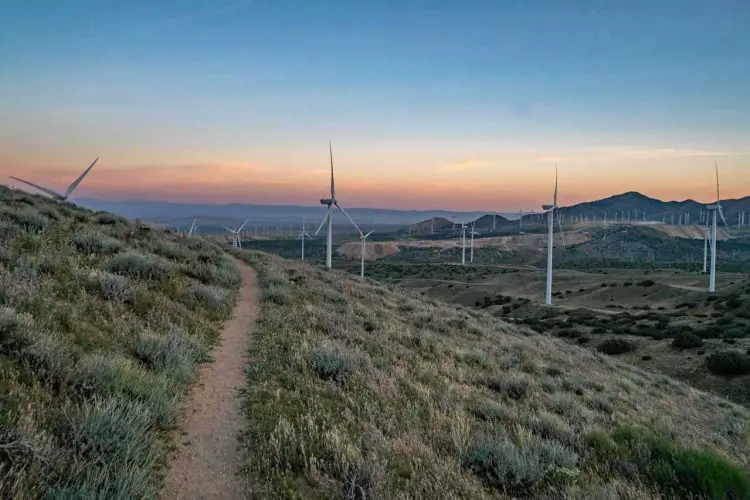
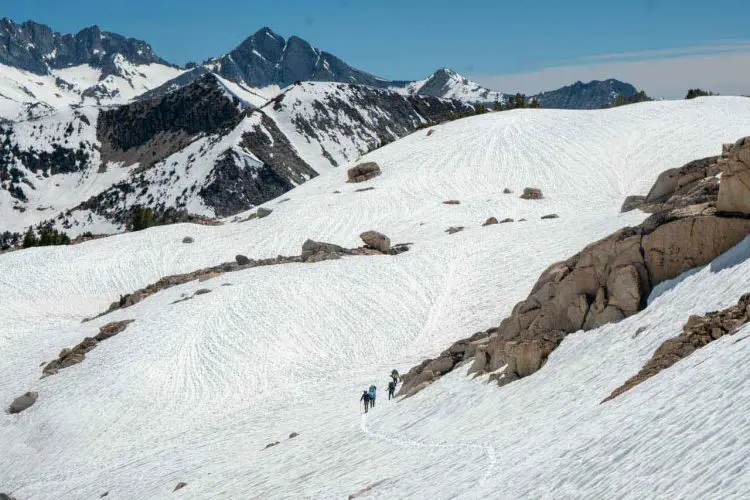
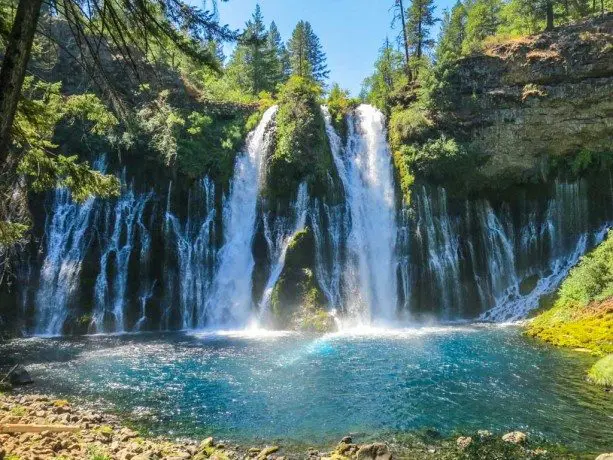
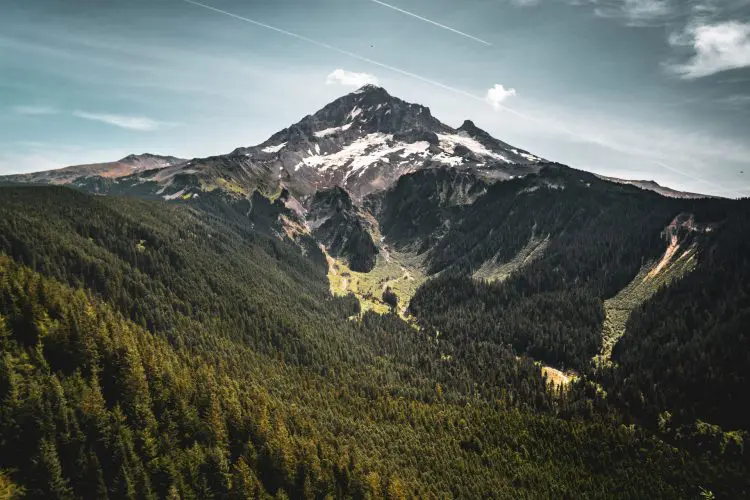
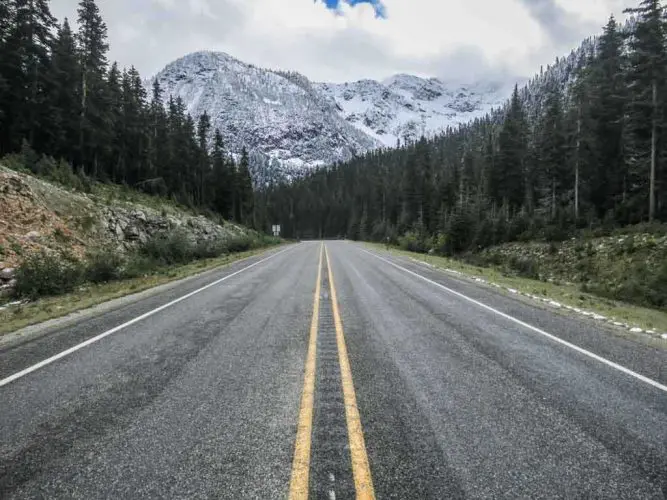
Best & Worst Moments
I will be sharing more of these in a future post, but for now, here are some examples that stood out when I asked hikers about their best moments, worst moments, and terrifying moments from their thru-hikes.
Best PCT Moments
- In Washington, I reconnected with some buddies I hadn’t hiked with since the desert. A few days after we left Stevens Pass we got on a ridgeline where we could look down into the canyon below and had an almost 270° view of the mountains surrounding us, including a view of Mount Rainier. We sat at this ridgeline for an hour just marveling at the view and our lives and sharing the moment together, especially after having not seen each other in so long.
- My third night on the trail was the first night I camped alone and my first time not in an established site. I watched the stars come out and paint the sky in every part of my peripheral vision. It was the first time I felt like this was a momentous, life-changing experience.
- Besides finishing, of course, the day we walked through Three Sisters Wilderness. I met only one other hiker all day, and the scenery was staggeringly beautiful. It was like having a private tour of Eden.
- While I was hiking with a group of 11 people, we all rolled into Kennedy Meadows hooping and hollering, and all of the people sitting at the General Store stood up and cheered for us as we walked in. This greeting made the arrival feel monumental for us.
Worst PCT Moments
- A couple of days out from Snoqualmie Pass [Washington], my knee doubled in size overnight, and I could not bend it. I didn’t know why, and it was incredibly unnerving. I went from hiking an average of 3 to 1.5 mph (5 to 2.5 km/hr), and my certainty of completing my hike went out the door. To have come so far and be so close to the end and have an injury pop up out of nowhere was so physically and emotionally painful, and each mile felt like 10 for the next several days.
- When the mosquitoes became unbearable in the Sierra, it could be overwhelming at times. Frantically scrambling to get my skin covered while being bitten everywhere was pretty unnerving.
- I had hiked 27 miles (43 km) to get to the top of the Belden climb, only to find a forest fire starting over the nearest ridge. Had to call 911 and they told me to hike 14 miles (23 km) back to Belden for safety. After I convinced them it looked safer to hike to Chester, I began a brutal night hike away from the fire, where I was dehydrated, had horrible chafing, and got stalked by a mountain lion. I found a flat spot to pitch my tent at 1 am. I woke up at 5 am and found that all my water had leaked out of a hole in my water bottle. During the heatwave, I didn’t think I’d make it the 6 miles (10 km) to water, but I did. I found out it was a steep, 1 mile (1.6 km), downhill side trail to the water. Once I got there, I sat down to drink in a cool depression near the water and just stared into the woods for two hours.
- Ending my hike early, July 10th in Quincy, CA. I had some unexpected family/personal things come up and it was in my best interest to think of them before myself – and end my hike. It took a good month or longer to accept and begin to cope with. It’s still difficult months later.
Scariest PCT Moments
- At Silver Pass, a huge thunderstorm rolled in out of nowhere. Lightning was directly overhead and I was very exposed. I ran all the way down Silver Pass to the tree line.
- Hiking into Seiad Valley there was a wildfire we could see and there was a ton of smoke and ash raining down on my tent/backpack. When we got to town we found out that section of the trail was about to be closed.
- I was camping alone in Northern Oregon one night, and after taking an edible one night I got unreasonably paranoid that an animal would come to eat me that night. I ended up waking up every hour and blasted Real Housewives of Potomac on my phone speakers to scare away any animal out there (there wasn’t any that I know of).
- The stretch between Wrightwood and Cajon Pass felt very sketchy at night as a solo hiker (especially going under the underpass). I also had a terrifying experience while at Mike’s Place late in the season.
- We got a ride with a trail angel (from Kennedy Meadows North back to trail) who was making insanely gross/inappropriate jokes during the drive – and getting egged on by other hikers. Sometimes the hiking community doesn’t make you feel safe either.
Discrimination
The Pacific Crest Trail is, for the most part, an amazing place filled with incredible people. However, just as the trail itself can be not so amazing at times – thunderstorms, fires, horrific weather events – the people too, can occasionally be trash humans with no business representing the PCT or trail community (or society at large).
This year, I asked hikers about discrimination experienced or witnessed on the trail. I already identified a better way to ask this question for next year’s survey and I am planning an additional post covering discrimination on the trail in more detail. And to the elderly, heterosexual, white retired man who responded “CRT question should not be in this survey”, you’re likely one of the reasons this question has been added (and, so we’re all clear, this question has about as much to do with CRT as it has to do with Robin Williams).

Sexism
Overall, 38.4% of female hikers experienced discrimination on the PCT. 8.4% experienced discrimination from other hikers, 16% from people in town, and 13.9% from both their fellow hikers and people in town.
Racism
Overall, 30.4% of BIPOC hikers experienced discrimination on the PCT. 7.1% experienced discrimination from other hikers, 12.5% from people in town, and 10.7% from both their fellow hikers and people in town.
Homophobia
Overall, 20.3% of LGBTQ+ hikers experienced discrimination on the PCT. 7.6% experienced discrimination from other hikers, 8.9% from people in town, and 3.8% from both their fellow hikers and people in town.
Trail Magic
Trail Magic Frequency
This year, I asked hikers about the frequency with which they encountered or received trail magic. This could mean a friendly person on the trail sharing some fresh fruit with them or a trail angel hanging out at a trailhead giving cold drinks and rides to hikers.
The scale was from 0 – never – to 10 – every day.
- 4.49 Desert
- 1.04 Sierra
- 3.87 Northern California
- 4.24 Oregon
- 3.65 Washington

Advice for the Future
Now for Pacific Crest Trail thru-hiker wisdom. I ask hikers what they would have done differently before their hikes if they were to do it all over again.
Pre-Hike Changes
- 25.6% – Gotten lighter gear
- 24.6% – Trained more
- 22% – Started earlier
- 16.4% – Saved more money beforehand
- 16.4% – Had gear more dialed in
THRU
20.33 lbs
The average base weight of hikers who said they would have liked to have gotten lighter gear before starting their hikes (9.222 kg)
In addition to asking hikers what they would have done differently before their thru-hikes, I asked them what they wish they had done differently during their hikes. Here are the top responses (regrets):
During Hike Changes
- 46.8% – Taken more photos of people
- 23.3% – Maintained a journal/blog
- 17.5% – Slowed down
- 13.5% – Fewer zero days
- 10.9% – Less time in town
THRU-1
25.3
The average number of zero days taken by hikers who said they wish they had taken fewer during their thru-hikes
Thru-hiker Advice
I ask hikers what advice for future PCT hikers they have. This will be thoroughly documented in the upcoming post PCT: Advice For The Future, here is a sample.
- It is a privilege to hike this trail and take add being a thru-hiker to your identity, soak it all in, every single moment. A month ago when I was still on the trail I thought every day how I was looking forward to being done. Now I think every day about being back on the trail with my trail family and seeing all of the beautiful things on the trail.
- Don’t feel like you have to stay with the same people the whole time. And don’t constantly try to catch up with people. There are awesome people throughout the trail and finding new people to hike with is really easy.
- Don’t go broke. Don’t expect people to do things for free for you. If and when someone helps you, show a little gratitude, and feel it too.
- Don’t get discouraged if everyone passes you! This is not a race. Many of the people that zoomed by in the desert ended up having some sort of injury. Everyone has their own pace based on their body type.
- Hikers come in all shapes and sizes. Hikers have all different experience levels. Don’t dismiss anyone because of the way they appear to you. We can learn something from anyone we encounter. Sometimes we learn how not to act towards someone but that is still learning. Sometimes we learn that even though that person looks like a *fill in the blank* to me, I really enjoyed meeting them.
- Trail angels are fantastic and mean well, but they don’t necessarily know your goals or trail conditions better than you (or better than authorities who have decided whether to close the trail).
- Try hitting the trail early in the morning when animals are more active. Stretch. Take the time to chat with other hikers in the Sierra; I met some of the most accomplished outdoor athletes there that had loads of invaluable advice. Don’t waste your time around negative people. The greatest gift you can give to other people is to listen.
Animal Sightings
Now, some data that doesn’t quite fit anywhere else; what kind of wildlife did Pacific Crest Trail hikers see on the trail? The most common animals? Deer. The worst. The rarest of the animal kingdom? Tortoise. I’ve hiked the Desert section of the PCT twice now and I have yet to see one of these mythical creatures.
Lastly, I would wager that some percentage of the 13.7% who reported “seeing” a mountain lion simply saw some eyes in the dark that were probably (most certainly) not a mountain lion. Just saying.
Animals Seen
- 91.3% Deer
- 89.8% Marmot
- 88.3% Rattlesnake
- 83.9% Bear
- 74.2% Pika
- 65% Mountain goat
- 43.7% Elk
- 39% Owl
- 29% Fox
- 25.1% Skunk
- 13.7% Mountain lion
- 12.7% Bobcat
- 4.2% Tortoise

Support the Survey
Every year, I receive numerous requests for guidance on how to support the surveys. Beyond sharing them with your close-knit bubble of weird hiker friends, the best way to support the survey is to contribute via Patreon. You’ll get access to exclusive posts, discount codes, live streams, and super awesome stickers so that everyone will know how cool you are.
If you’re not into Patreon, that’s cool; you can Venmo @halfwayanywhere, Cash app $halfwayanywhere, or PayPal contact@halfwayanywhere.com
This is not expected. The data collected in the survey will always be free and accessible to everyone who wants/needs it. Your support is much appreciated and helps pay the website (and survey) bills.



Pacific Crest Trail Survey Collection
Finally, another HUGE THANK YOU to all the hikers who completed this year’s survey, including (but not limited to): 2x Snacks, 9LITERS, AB, Abba Zaba, AC/DC, Admin, Admiral, Afterburner, Airdrop, Almost Famous, ALWAYS (A Long Walk After Years in Software), AM Drive, Anchorman, Angsty Cricket, Ants <3, Apricot, Aquaman, Aquarius, Arrow, Artemis, Arugula, Astro, Atlas, Awol, AWOL, B’shert, Badger, Baewatch, Bagel, Balance, Balto, Bamela Anderson, Bartender, Bathtime, BBQ Day, Beans, Benihana, Biergarten, Big Brother, Big City, Big Heart, BigFoot, Biggie, Bill Nye the Hiking Guy, Biscuit, Bliss, Blowdown, Blue sauce, Bluebird, Bluegrass, Boomer, Boone, Boonie, Bougie, BougieLocks, Boy Scout, Brains, Braveheart, Breezy DD, BRO, Bubbles, Bushwhack, Butter Beer, C Bear, Caboose, caBOOST!, Cactus, Cairn, Camp Fire, Cannonball, Canoe, Cap, Carebear, Cartwheel, Cash Money, Catch, Catmando, Central Time, Chaise, Champa, Chaperone, Chia, Chicago, Chickens, Chili Pepper, Chipmunk, Chuckles, Chucks, Clancy, Clawfoot, Click, Clockwork, Colonel Mustard, Colonel Sanders, Compass, Cortana, Cougar Bait, Cowgirl, Craftsman, Crikey, Crockpot, Cruise, Crusher, Daddy-O, Data, David J Viehauser, Day Hiker, Deadpool, Deep Dive, Details, Diamondback, Dijon, Dimorphism, Dirt Devil, Dirtpit, Dirty Chocolate, Dirty Knux, Dirty Rice, Doc, Dogboy, Donkey, Dory, Double Barrel, Double Puffy, Double Stuff, DoubleD, Downhill, Dracula, Draggin’, Drip, Drop, Dust, Dusty, Easy, Easy Goin’, eBay, el chapo, El Gato, El Hefe, Encore, Endless, Euphoria, F-KAT (Formally Known As Tall), Felony, Feral, Fig Newton, Fire Ant, Fire Thighs, First Class, Flavortown, Fly Away, Flyer, Forty, Fragile Forder, Frank, Full Throttle, Fullmoon, Fun Fact, Funky Bunch (Funbun)or(shins), Gamechanger, Gator, Gatsby, Godfather, Gold Star, Golden, Goldilocks, Good News, Good Vibes, Goodwill, GQ, Graceful, Grams, Grandpa, Grandpa, Gutfish, Habanero, Half Moon, hand me down, Happy Accident, Happy Feet, Hardway, Haystack, Hazard, Hell Bent, Helo, Hermit, Hiker mom, HoneyBear, Hopscotch, Hot Pink, Hot Sauce, Hot Soup, Hot Tamale, Huevos, Hundo, Ignition, Inchworm, Indy500, Inertia, Inspector cheese, Irwin, Jack Russell, Jackpot, Jackpot, Jaybird, Jedi, JEEMAC, Jeffrey, Jet Puff, JimmyJam, John Goodman, Journey, JPRO, JR, Juicy, Just Katie, Just Mike, Just Steve, K-town, Kale, Kemo, Keys, Khaleesi, Kiko!, King of The North, Kismet, Knee Deep, Lab Rat, Lady, Laffy Taffy, Late Show, Lawrence Muir Parker, Lazy Boy, Leathermaid, Leftover, Lefty, Leggo, Lemming, Lifeguard, Lightning, Little Beast, Little Shark, Lobster, Local Dick, Logic, Longdays Dan, Lorax of Cascadia, Lost & Found, LOTHAR, Low-Tech, Lucky, Lucky Thong, Lupine, Lux, Lyric, Macgyver, Magnet, Magnum P.I., Major, Mama Peach, Mango Michael, Mantra, Maps, Matador, Michael G Edwards, Mineral, mitchell weitzman, Monarch, Moonbeam, Mosey, Motor Mouth, Mozart, Mr. Focus, Mr. Freeze, Mr. Ranger, Mudbutt, Mule, Mulligan, Narrator, Navigator, NearMiss, Neddy, No-Time, Oakley, Oats, Obi, Olaf, Old Man, Old Man Hours, Old Weezer, Old Yeller, Ollie, One-Ply, Orca, Otter, PackMan, Pak Dave, Panties, Panties, Papa Jorts, Parachute, Paris, Past Ten(t)se, Pastor, Pastor Frank, Patches, Peaches, Peeps, Pepper Jack, Pez, Phantom, Pigeon, Pinot, Pips, Pitcher, Playlist, Pokes, Pole Dancer, Pony, Ponyboy, Popcorn, Poppins, Poppy, Pops, Pothole, Power, Prancer, Presto, Princess, Prospektor, Pub Crawl, Puma, Purple Legs, Push, Pusher, Q of The Cuties, QB, Quail, Quickdraw, Rachel C Peterson, Rally, Ranger, Rapunzel, Rattlebear, Ravioli, Re-awakening, Recharge, Red Eye, Resupply, Ribbit, Ripper, Roadie, Roadrunner, Rockslide, Rocky, Roller, Rooster, Routebeer, Runts, Sage, Salt, Saltlick, Salty, Salty J, Sam H, Sandman, Sandstorm, Santiago, Scenic Route, Scout, Scrambles, Secretariat, seven up, Shady, Shakira, Shame, Sheepdog, Sherbet, Sherpa, Shit Kicka, Shorts, Shortstop, Siesta, Siren, Skai, Skidz, Skipper, SLASH, Slo-Mo, Smidge, Smiles, Smudge, Snakebait, Snakecharmer, Snapshot, Snuggie Bear, Soccer mom, Songbird, Soul, Soul Sista, Sour Patch, Spamuel Adams, Sparkles, Spec., Speed Goat, Spielberg, Spin!, Spirals, Squatch, Star Cat, Stats the Bastard, Steady, Steely Dan, Stick ‘n’ Poke, Stilts, Stinkerbelle, Stinky Cheese, Stoked, Strawberry, Stretch, Strings, Stud Muffin, Stumbles, Sundae, Sunny B, Sunshine, Sunspot, Survivor, Susan K Svensson, Swedish Fish, Sweetfeet, Swiftie, Swiss, SwissMiss, Synergy, T2, Tai chi, Tailgate, Tales, Taquito, Taters, Tennis Mom, Terminator, Teva, The Dawg, Thien Luong (Bill) Duong, Thimbleberry, Thin Mint, Third Wind, Thumper, Tidbits, Tiger Blood, Tigger, Tin Man, Tina Burrita, Tissue, Toad, Top Rock, Tortoise, Trail Spice, Tree Boy, Trek Ever, Trickst3r, Trigger, Trooper, Trouble, Tumble weave, Tumbleweed, Turq, Twain, Twinkle Toes, Two4Two, TwoTone, Uggie, Uncle Jim, VB, Viking, Vulture, Walnut, Whistler, Wick, Wicket, Wiggles, Wiki, Wildflower, Wonder Woman, WorksHard, Wrong Way, Yael, Yelp, Yogi, Zippy, Zoomies, and Zootea.
If you have any feedback, comments, suggestions to improve the survey, or data you would like to see in future posts or surveys, leave a comment below and let me know!
Affiliate Disclosure: This page may contain affiliate links, which means I may receive small commissions for purchases made via these links at no additional cost to you. This helps pay the bills and keep the site up and running. Thank you for your support!
